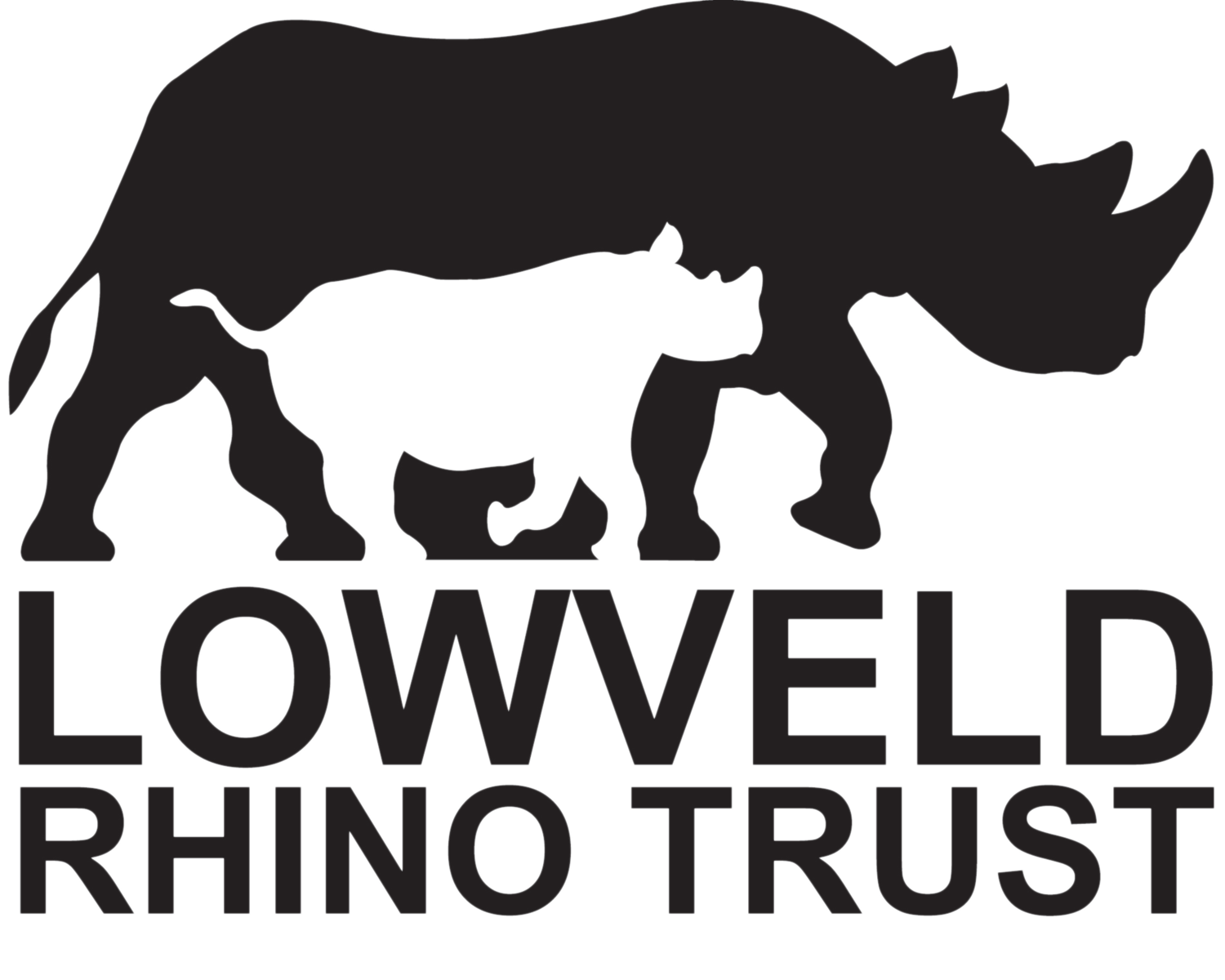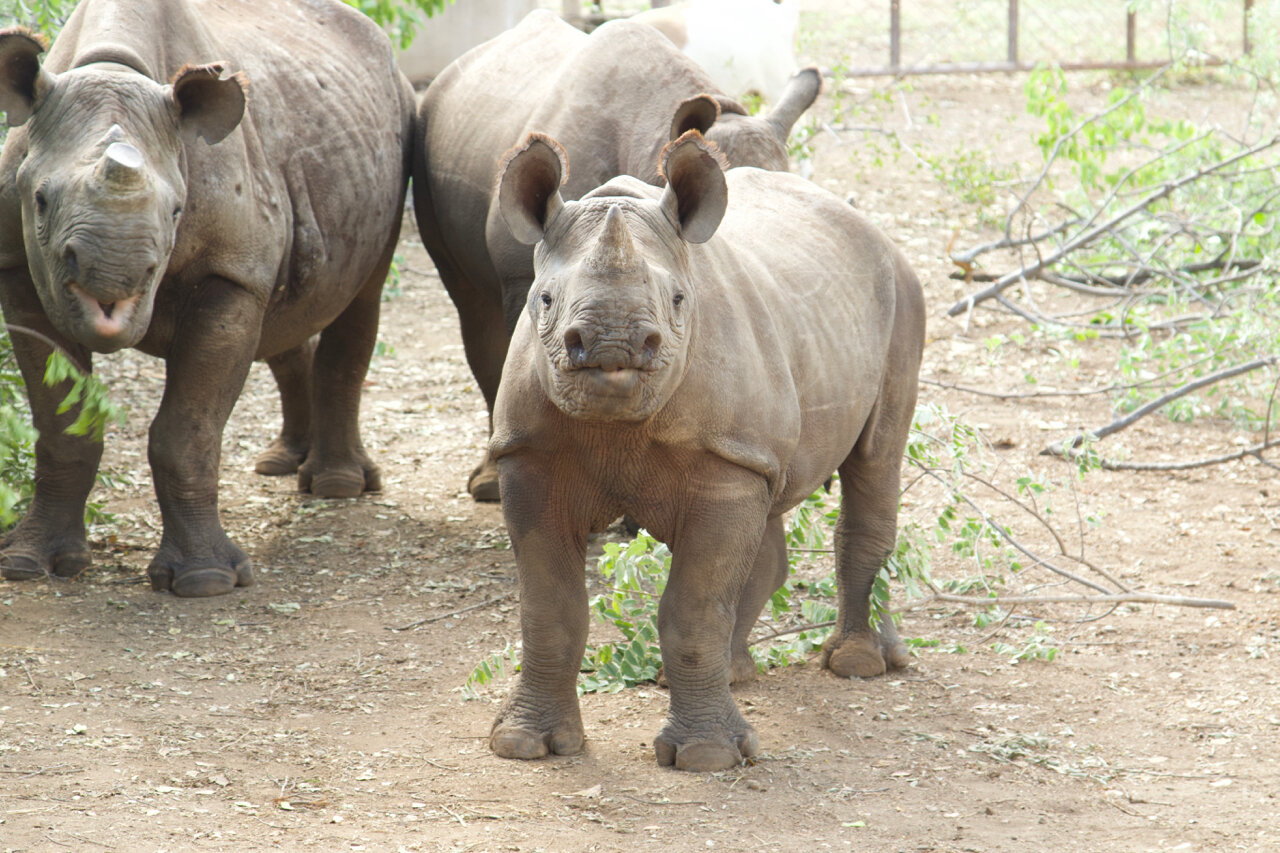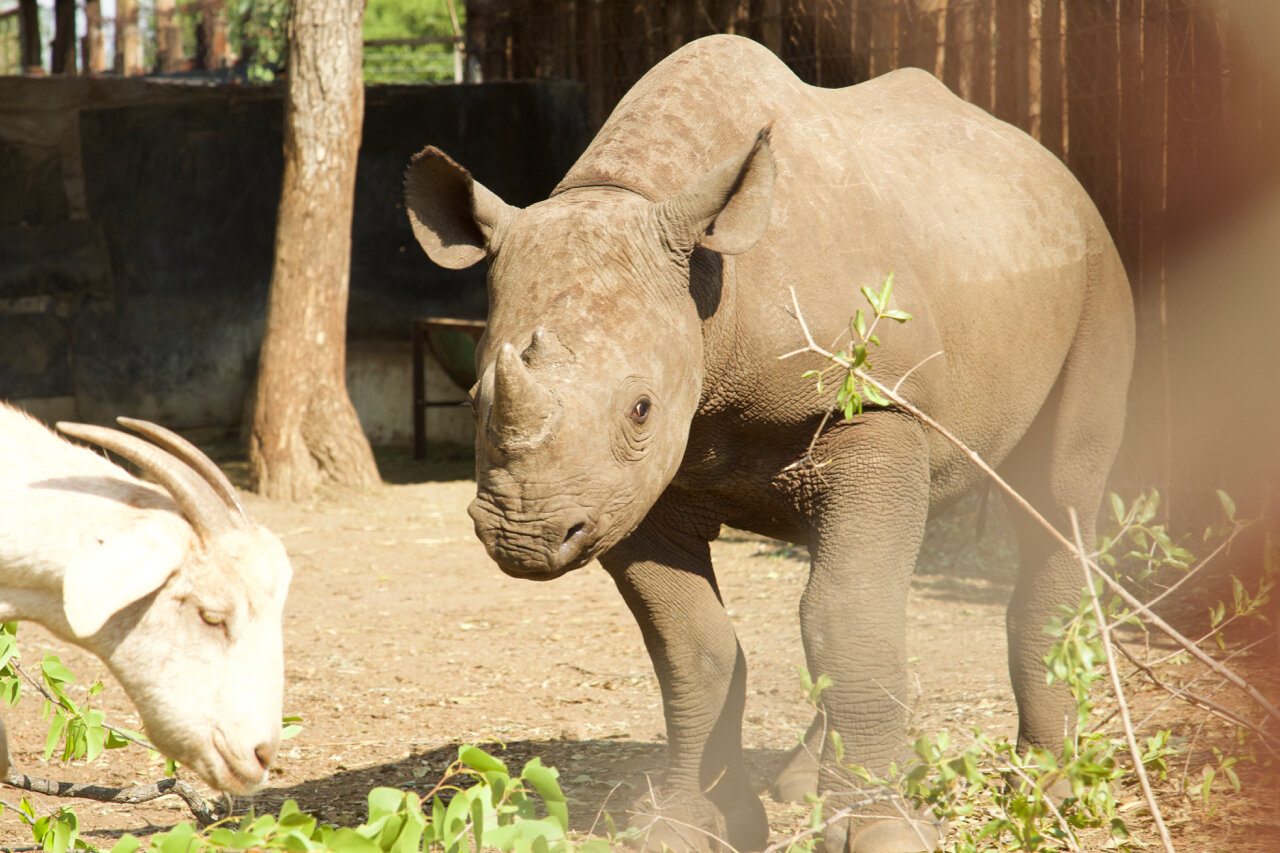Inopa - another orphan
July 2018
While scouting water points for rhino spoor on a routine monitoring patrol, a Lowveld Rhino Trust team found a single set of small black rhino tracks leading to and from a small pool of water filled by recent rains. The width of the back foot measured only 16 centimetres – so the rhino was only a calf, likely less than a year old. Black rhinos are dependent on their mothers for milk and protection until they are at least one and a half years old, so the team circled the pool looking for the mother’s spoor. There was none. The only tracks coming to the water were those of the calf. Over a week of daily watering visits by the calf were recorded in the damp earth. Something was not right.
A blurry shot of a very cautious calf
Two rhino monitors tracked the spoor away from the water’s edge, carefully avoiding making any noise and regularly checking the wind direction. Black rhinos have very keen senses and are particularly aware of sound and smell to alert them to threats in their environment because visibility is often limited by leaf cover in the thick bush habitat that they frequent. Quickly the monitors found the calf, alert and nervous – and still alone – the mother likely killed by poachers somewhere in the same area. Rhino poachers do not care what they kill and often shoot female rhinos even if they have young calves beside them. The quick photo the monitors managed to get before the calf ran off confirmed their age estimation – the rhino was only 11 months old. Too young to survive alone in lion country.
An urgent rescue effort was mounted. An experienced rhino vet was flown in and with the spotter plane overhead to guide the ground team onto the calf, a ground darting capture was underway. Between the trackers and the spotter plane the calf was quickly found within darting range – but the thick bush obscured every darting angle – even at ten metres. Multiple close approaches failed to present a darting opportunity and the disturbance was distressing the calf and driving him from his familiar hiding place, leaving him even more vulnerable to lion attack. So the attempt at ground-darting was abandoned.
Inopa safely settled in the boma
A helicopter, with an experienced pilot, was needed for the vet to be able to dart the calf from a more vertical angle in this thick bush. It took days of pleading with the authorities to get the required Air Force approval to deploy the helicopter, since helicopter operations are closely controlled in Zimbabwe. Remarkably the little calf managed to avoid the lion prides and he was eventually safely captured.
On release into the holding pen at the hand-raising facility it became immediately obvious how this little calf had managed to survive so long in lion country on his own. He was a supremely confident and aggressive individual exhibiting absolutely no sign of weakness or fear. Even after a week he was still challenging any living thing that came into view – even the three other young black rhinos in the neighbouring yard. Black rhinos are though by nature social animals and “Inopa”, as he is now known, is realizing he is back among friends again and will soon be joined with the other orphans so they can grow up together and be released back into the wild as a group.
LRT Rhino Orphans








